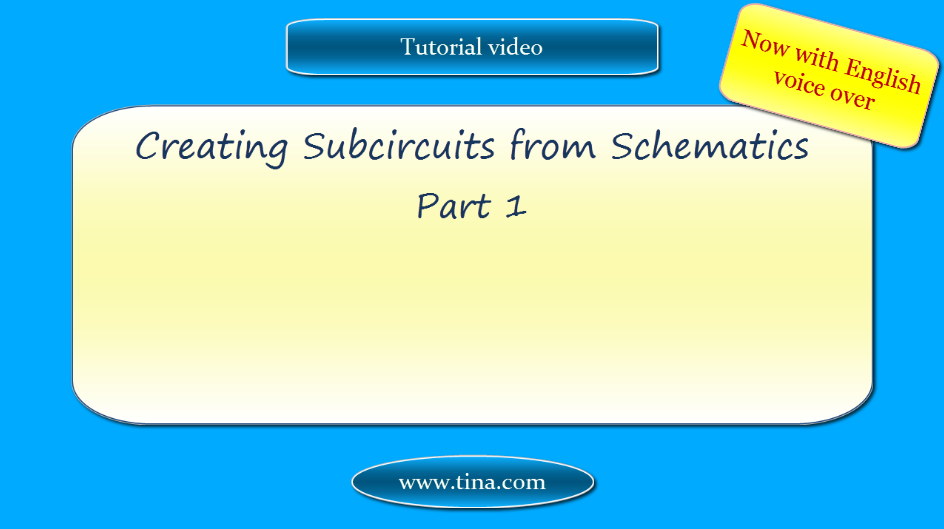Creating Subcircuits from Schematics in TINA offline version, part 1
In TINA you can convert any schematic diagram into a subcircuit called a Macro.
Watch our tutorial video
to see how to create a Macro in TINA:
Download the FREE trial demo of TINA Design Suite and get
- One year free access to TINACloud (the cloud-based, multi-language, installation-free online version of TINA now running in your browser anywhere in the world.)
- An immediate 20% discount from the offline version of TINA
- Free license for your second computer, laptop etc.
You can also find below the script of the video:
Creating Subcircuits from Schematics
In TINA you can simplify schematics and hide clutter by turning portions of the schematic into subcircuits.
TINA automatically represents these subcircuits as a rectangular block (New macro) on your schematic, but you can create any shape you like with TINA’s Schematic Editor or select an already existing shape.
You can convert any schematic diagram into a subcircuit, called a Macro in TINA, simply by adding the terminals and saving the new circuit in the special (*.tsm) format.
Let’s see how to create a Macro in TINA
Load the Half Adder (Half_Add.tsc) example from the Examples folder of TINA
First, we will Delete the text and the diagram.
Let’s convert the Half Adder example into a Macro
Delete the old terminals and replace them by subcircuit terminals called Macro Pins in TINA
To select the portion of the circuit (terminals) click at the corner of the area to be selected, hold down the left mouse button then move the mouse and release the left mouse button at the opposite “corner”.
Press the Delete button
Select Macro Pin from the Special Toolbar
Rotate it by using the Rotate left or Rotate right Button, then connect it to the circuit
Double-Click the Macro Pin1 to be selected then in the Pop-up window rename the Label as it is shown.
Repeate this procedure for all deleted terminals
Next, create and save the new Macro
Select New Macro Wizard… form the Tools Menu
Set the name to Half Adder
Next, select the shape you want to assign
At this time we will select the “Auto generate shape”
then set the file name and press Save
Finally, press the Insert button
In the Dialog box the following message appears:
The macro file is ready for use, it can be inserted by selecting Insert/Macro or by pressing the Insert button below.
The Rectangular Schematic symbol – which has been automatically created – will be attached to your cursor and you can place it wherever you wish (on the workspace).
If you double-click the Macro and press Enter Macro you can see and edit the content of the macro
We will add „subcircuit” to the original name of „Half Adder”
(We will change the name from Half Adder into Half Adder subcircuit)
Note that by default this change will be stored along with the Macro in the TSC file.
If you want to save the changes also in the already saved Macro, invoke the New Macro Wizard again from the Tools menu
Here you have to enter the Macro name again (Half Adder Subcircuit), which allows you to change the old name (Half Adder)
Select Auto Generate Shape
Let’s Save the modified Macro under a new name: Half Adder Modified
The name change we’ve made is included in the name of the Macro
Let’s open the Macro to see the changes in the body of the Macro.
The changes we’ve made are indeed included.
Let’s check with an analysis the operation of the new Macro we’ve created
Now just let’s close the Macro, we have opened
Load the Half_Add.TSC circuit from the Examples folder of TINA again (without the text and diagram)
Insert the new Macro we have created
Using Copy and Paste, add the Generators and Outputs of Half_Add.TSC to the Macro.
Run Analysis
Digital Timing Analysis…
You an easily check that the new Macro provides the same result

